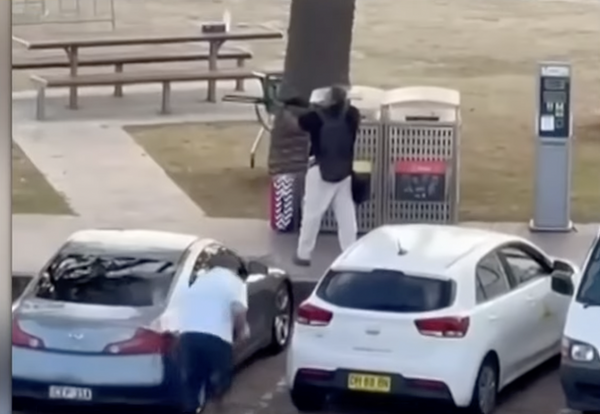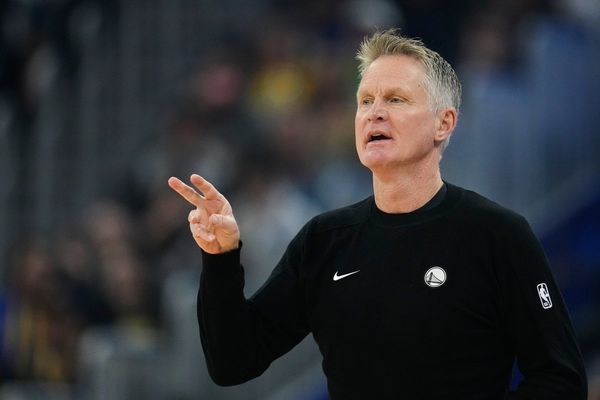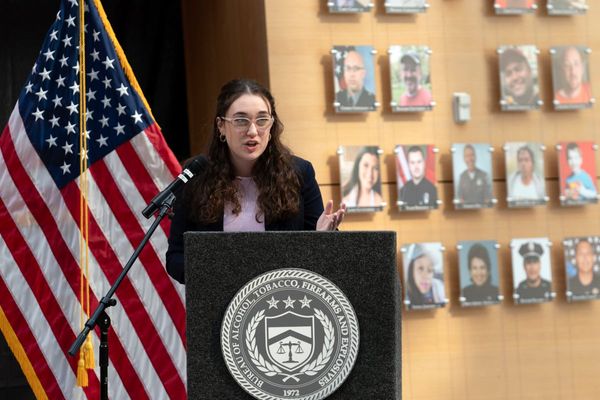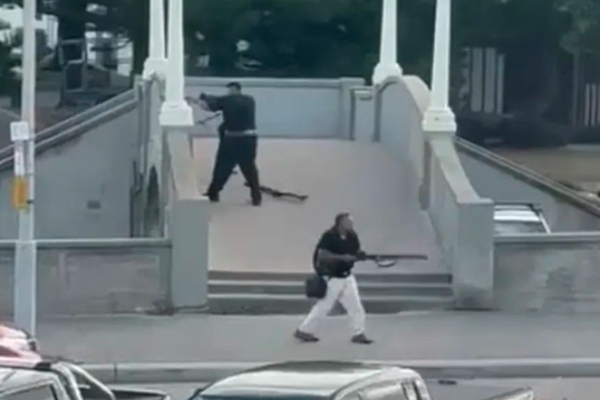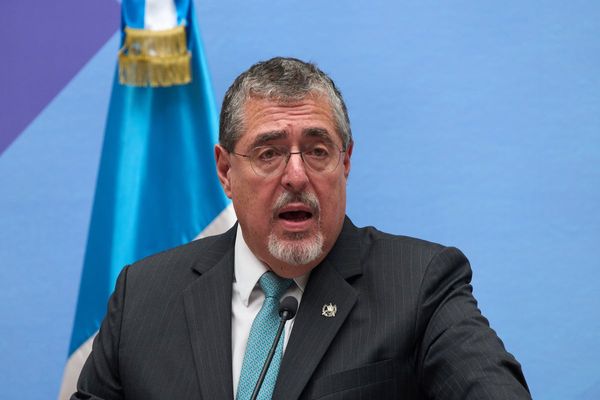
A Washington DC police officer made the stunning admission that he was told to omit from a report the fact that a federal agent fired multiple times at a driver during a traffic stop.
The officer’s admission comes amid a series of shootings involving federal agents deployed to cities under the Donald Trump administration. It also reflects a broader pattern in which charges brought by federal agents are often dismissed once they reach court.
Last week, Metropolitan police department (MPD) officer Jason Sterling testified in court that he had been instructed by a “team leader” not to disclose details of a Homeland Security Investigations (HSI) agent firing three times at a man, Phillip Brown, in Washington DC during a traffic stop earlier this month, according to the man’s lawyer, Quo Mieko S Judkins, Washington City Paper first reported.
According to Sterling’s affidavit which the outlet reviewed, he and another officer, Divonnie Powell, were patrolling with federal agents from Customs and Border Protection, the Diplomatic Security Service, Marshal Service, the FBI and HSI.
At one point, officers noticed Brown’s car “traveling at a normal speed”, but switching lanes a few times “just as officer Sterling activated the emergency equipment to affect [sic] a traffic stop”, the outlet reported.
Sterling and Powell thought Brown might try to flee, so they “moved out of the way to allowed [sic] the supporting federal partners to stop the vehicle”, according to Sterling’s affidavit.
Without mentioning the shooting in the affidavit, Sterling wrote: “The engine to the Dodge SUV revved and start [sic] advancing towards officers that were on foot and ultimately struck the rear of the Rav4. The driver and sole occupant of the Dodge SUV was removed from the vehicle and detained. The driver … was placed under arrest and transported to the 6 District Station for processing.”
Similarly, in Powell’s public incident report, there was no mention of the shooting. Instead, the report simply said that “officers observed a white in color Durango with heavily tinted windows bearing no front tag affixed to the front of the vehicle.
“Officers attempted a traffic stop on the vehicle due to the traffic violation at which time S-1 disregarded and continue [sic] [to] flee from officers. During the course of S-1 fleeing, S-1 used the vehicle to ram another vehicle and attempted to flee. S-1 was arrested and transported to Sixth District for processing,” he added.
Brown was charged with a felony of fleeing from law enforcement.
According to Judkins, an HSI officer fired at Brown during the encounter. Although none of the bullets hit him, two went through his passenger seat and another tore near his jacket’s collar.
“It is shocking to me that someone was almost killed over a missing front license plate,” Judkins told Washington City Paper, adding: “He was nearly killed during this encounter, which the court found lacked probable cause for any criminal charge.”
Describing the instructions given to Sterling by a “team leader” to omit details on the shooting because there would be an internal investigation into the matter, Judkins told the outlet: “I’ve never heard of that,” adding that neither she nor the US attorney deciding whether to file charges against Brown had been shown body-camera footage from the incident.
According to Judkins, the prosecutor said the footage was “locked down”, Washington City Paper reported.
Despite not knowing a federal agent had fired shots at Brown – or having seen the body-camera footage – the US attorney offered Brown a plea deal the night before his preliminary hearing, according to the outlet. Under the offer, Brown could plead guilty, avoid a felony and have the charge reduced to a misdemeanor.
“There was no meaningful consideration,” Judkins told Washington City Paper, adding: “At that point it was coercion. You either take the bargain without your attorney being able to fully investigate the case, or you lose the deal.”
Four days after Brown’s arrest and the shooting, Sterling testified in court that he had been instructed to omit details about the shots fired.
Brown, who spent four days in jail, was later released when Washington DC superior court judge Carmen McLean dismissed the charge for lack of probable cause.
In a statement to the Guardian: an MPD spokesperson, Tom Lynch, said MPD was now investigating the incident, adding: “MPD investigates all shootings involving members of law enforcement that occur in the District of Columbia. The case will be independently reviewed by the United States Attorney’s Office for the District of Columbia.”
Meanwhile, the DHS told the Washington City Paper: “During the attempted stop, the suspect drove his vehicle at a Metro Police officer and a special agent from Homeland Security Investigations, in a deliberate attempt to run them down.
The agent, in fear for his life, and the lives of others, and the public fired defensive shots into the suspect’s vehicle. No one was injured and Metro Police took the suspect into custody. This incident is currently under investigation.”
The Guardian has also reached out to DHS for comment.
